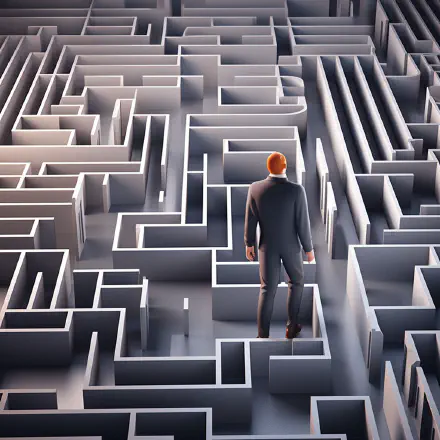
Introduction
The ability to think logically and reason effectively is essential for success in both personal and professional life. Logical thinking helps you analyze situations, identify problems, and come up with practical solutions. However, many people struggle with logical thinking, and it can be challenging to know where to start to improve these skills. In this blog, we will explore a step-by-step guide to help you improve your logical thinking skills and better your reasoning abilities.
Step 1: Identify the problem
The first step in logical thinking is to identify the problem. Ask yourself what the problem is and why it needs to be solved. Try to define the problem as specifically as possible, as this will help you focus on the issue at hand.
Step 2: Gather information
Once you have identified the problem, gather as much information as possible. Research the issue, collect data, and gather opinions from others. The more information you have, the better equipped you will be to make a well-informed decision.
Step 3: Identify the assumptions
Assumptions are beliefs that we take for granted and assume to be true without questioning them. Identify the assumptions you have made about the problem and evaluate whether they are valid. Questioning assumptions can help you identify potential biases and gaps in your knowledge.
Step 4: Evaluate the evidence
Now that you have gathered information and identified your assumptions, evaluate the evidence. Consider the reliability of your sources and the quality of the information you have gathered. This step will help you determine the strength of the evidence and whether it supports or refutes your assumptions.
Step 5: Consider alternative perspectives
At this stage, it’s essential to consider alternative perspectives. Try to see the problem from different viewpoints and consider other possible explanations. This step can help you challenge your assumptions and identify potential blind spots.
Step 6: Draw conclusions
Based on the information and evidence you have gathered, draw your conclusions. Ensure your conclusions are based on facts, evidence, and sound reasoning. It’s also essential to recognize the limitations of your conclusions and be open to revising them as new information arises.
Step 7: Communicate your findings
The final step in logical thinking is to communicate your findings. This step involves presenting your conclusions and the evidence that supports them. Clear communication is essential, and it’s vital to convey your ideas in a way that is easy to understand and persuasive.
Conclusion
Logical thinking is a valuable skill that can help you make sound decisions, solve problems, and evaluate arguments. By following this step-by-step guide, you can improve your logical thinking skills and better your reasoning abilities. Remember to identify the problem, gather information, identify assumptions, evaluate the evidence, consider alternative perspectives, draw conclusions, and communicate your findings. By using these steps, you can become a more effective and efficient thinker, and better equipped to tackle the challenges of everyday life.

